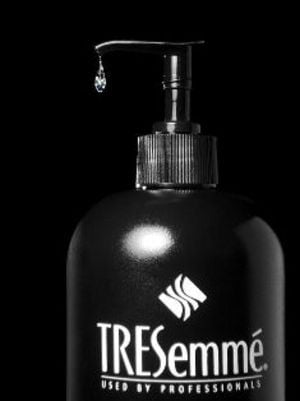The average woman has her fair share of products filling the cabinets in her bathroom. Shampoos, conditioners, gels, hair spray, mousse, etc., all kinds of products to fulfill all the possible needs of our hair. But do we ever actually pay attention to what the back labels on our products say? Some products have a much higher protein content than others have and by using a combination of these protein loaded products on a regular basis, we could be unknowingly causing damage to our hair.
Protein in the right amount can be very beneficial for your hair. Hair is actually made of a protein called keratin so products containing protein can often add strength and help to reinforce hair follicles. A protein treatment can be a great option after any kind of professional chemical treatment to rebuild hair bonds, especially for anyone who likes to regularly color or chemically straighten their hair. Many stylists already include this as part of your service depending on what you’re having done, but if they don’t, never hesitate to ask. It will obviously cost a little more, but it’s worth it if you get regular chemical services.
However, if you are getting chemical treatments at the salon, then come home and continue your week with protein loaded products, you may start to notice an unwelcome change in your hair. Hair that is suffering from a protein overload will be brittle and often dry despite conditioning efforts. It may be wise to hit that jam packed beauty cabinet and check the bottles of your favorite products so see what you’re putting on your hair every day. Look for ingredients like silk protein, soy protein, silk amino acids, hydrolyzed collagen protein, wheat protein, or wheat amino acids. The general rule of thumb is that the closer to the top of list these items are the more of it there is inside the product. When scanning the store isles for your next new conditioner, pay attention to products advertised as strengthening, fortifying, anti-breakage, or repairing because these products are going to contain protein.
For example, let’s look at a Nexxus Dualiste Color Protection and Anti-Breakage Shampoo. The ingredients for the anti-breakage portion of the shampoo are as follows:
Water (Aqua) , Sodium Laureth Sulfate , Cocamidopropyl Betaine , Disodium Laureth Sulfosuccinate , Sodium Laureth-6 Carboxylate , Propylene Glycol , Glycol Distearate , Polyquaternium-10 , Fragrance (Parfum) , Cocamide MEA , PEG-6 Caprylic/Capric Glycerides , Citric Acid , Disodium EDTA , DMDM Hydantoin , Imidazolidinyl Urea , Sodium Chloride , HYDROLYZED KERATIN , HYDROLYZED WHEAT PROTEIN , HYDROLYZED SOY PROTEIN , Red 33 (CI 17200) , Blue 1 (CI 42090) , Ext. Violet 2 (CI 60730)
You’ll notice there are several proteins listed towards the bottom of the list. So for this product you should probably use caution, particularly if you are planning to use it daily. A sensible way to use this shampoo would be directly after a color or chemical treatment, then steadily for a week or two. After that it might be a good idea to switch it up to a more moisturizing shampoo after that. This line actually allows for that with their Nexxus Dualiste Color Protection and Intense Hydration Shampoo.
All in all, it’s really just a matter of balance. Products that contain protein can be very useful in adding strength to hair and repairing damage from over processing. However, conditioning products are just as important, if not more so. It would be wise to assess the products you use on a regular basis to ensure you’ve got an appropriately balanced regimen.
Sources:
www.nexxus.com
Ingredient list found on www.walgreens.com



